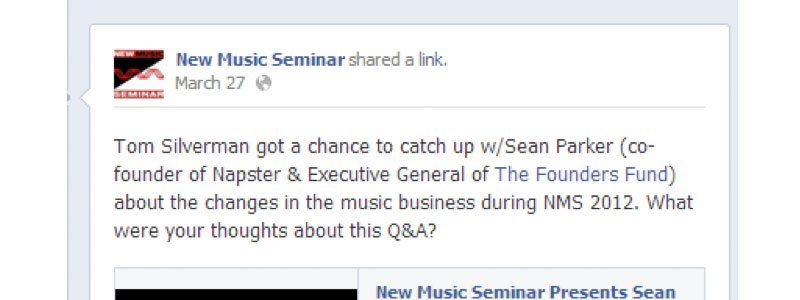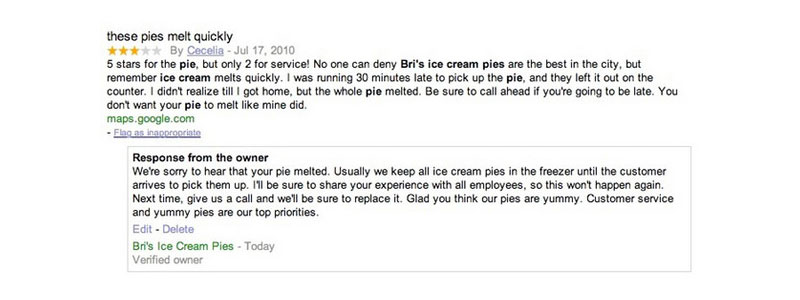BLOG
How to Master Effective B2B Content
Think of your business’ marketing strategy as a megaphone instead of thinking of it as a funnel. With the megaphone, you have the mouthpiece where all the information is. As the sound travels outward, you’re reaching out to more people while disseminating simpler, and more relatable concepts. Your B2B social content megaphone should have four different sections, each with their own unique functions:
- At the section where you’re still gathering leads or attracting an audience for database marketing, this is where you’ll be using social media promotion. For instance, you can use targeted Tweets, teasers, and abstracts to hook the audience and get them into your content stream.
- As you move closer to the heart of your content, you can then create a paragraph or so of content where you’ll express your idea. If the Tweet, for instance, is about a sale, then this is where you can talk about why there’s a sale and what items will be on sale.
- As the user is getting closer to an actual purchase and arriving at the bottom of the sales funnel, you can then directly address the users as potential buyers with thought-provoking content about the items on sale. For instance, if you’re running a clothing business, you can give them information on how they can wear the items on sale, or why they need those items in their closet.
- Lastly, you can combine everything from the higher levels of the sales funnel into articles. This is where you’ll be convincing, engaging and interesting enough to be able to persuade the user to buy something.
The examples used above are just simple representations, but the megaphone-style marketing content can work with almost any industry. To further explain how you can effectively master the B2B content of your business, you would need to know about here key concepts: thought leadership, creating teaser content, and analyzing audience feedback to the content you’ve disseminated via your website and social media platforms.
Thought Leadership
Thought leadership entails having an authoritative and idea-rich voice that inspires users to keep coming back to you for business. It includes the very heart of the content from which all the promotional material stems. This includes white papers, bylined articles, press releases and more. To be able to create this material, you need to be able to get into the mind of the customers and know how they act and what their purchasing behaviour is like.

Thought leadership has four components that characterize the traits of thought leadership content:
- It must be expert content in that your ideas are genuine and have real value. It should be based on fact and reason, and not on phony advice just to make your audience feel better, or fake expertise. You have to know what you’re talking about and you have to say it in a way that customers would understand.
- It must be unique to your brand and must be in line with your brand’s place in the industry. You can’t simply copy the ideas of the top brands because their ideas may not necessarily apply to your business.
- It must be comprehensive. Thought leadership entails being the source of all the marketing and promotion you’ll be doing for your brand. If your thought leadership content is lacking, then there will be no usable material for the marketing strategy. Ask questions, answer them and create content based on those queries. Cover all the bases before you distribute any information.
- Being comprehensive is important, but you also have to break the content down into digestible pieces so as not to overwhelm your readers. Don’t over-stuff a piece; instead, break them up into three of four ideas per piece.
Have Easily Digestible “Teaser” Content
Making your audience interested in your content may be tough, but by providing them with easy to understand teasers, you can draw them deeper into the sales funnel. When you’ve gotten the attention of your audience, you can’t stop there. Instead, you have to keep them engaged with meaningful thoughts and ideas. Give them these ideas with a meaningful chunk of information that can get them thinking.

Teasers must be based on what the audience would be interested in. Other than having content that is relevant to the audience, it must be packaged in such a way that the audience will find them interesting. For instance, you can lead your audience to white paper content using a short blog post or an infographic. In addition, you must also have a range of delivery options so that you can reach out to a diverse audience. Some audiences may be interested in infographics, others may prefer pictures, and some would rather have how-to articles, and so on.
Analyze the Feedback
Marketing, after all, is an effort to build your brand as well as your relationship with your audience. No matter how well you think you know your audience, you may still be surprised to find different insights and feedback that you hadn’t considered. It’s important to learn how you can digest the feedback so that you can change the way you market your brand for the better.

Here are some things you can do in order to use your feedback to create a better strategy:
- Be aware of your audience’s reactions. By finding out what works and what doesn’t work for the audience, you can mould your future content into something that they would be engaged in. You may notice how some ads get taken off the air for being so laughably bad. That’s all because of audience response.
- Discussions and comments among users area also a rich source of feedback. People are more likely to be interested in topics that are widely discussed. By opening your content to discussion, you can potentially get more opt-ins and more leads into the sales funnel.
- Lastly, respond to the feedback. Don’t just read them and ignore them. Take the time to reply to comments and consider what the audience is saying. This is the best material you can use to optimize your content.
B2B marketing can be difficult because it can be difficult trying to gauge what each individual business needs. But like B2C, it is possible for you to tailor your content, and make sure that your content is worth people’s time, and beneficial to their business. By considering what businesses need, and what you can offer them, you will surely be able to market yourself effectively.











